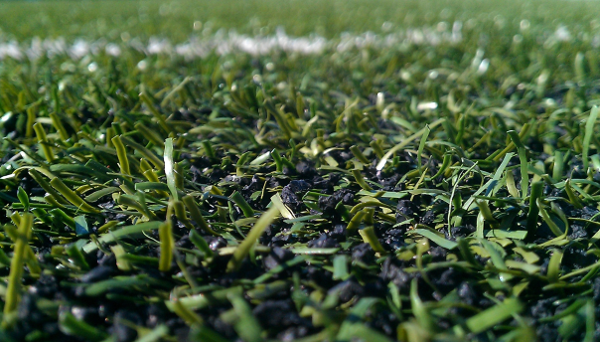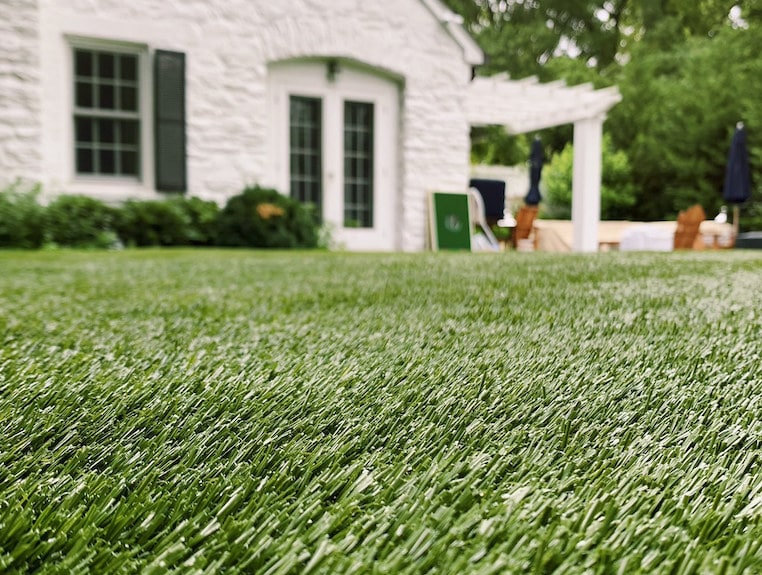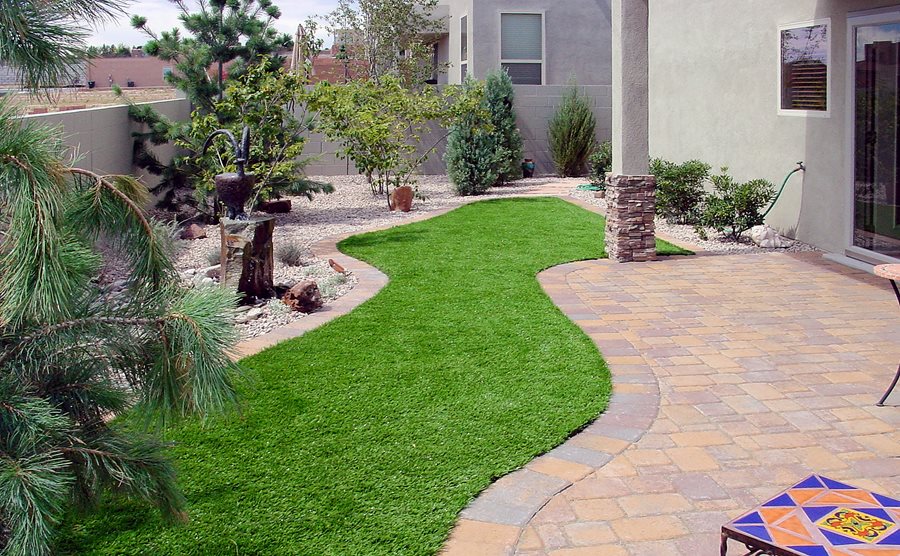See Why Homeowners Prefer Artificial Grass for Lasting Landscaping Practices
As homeowners significantly focus on sustainability in landscaping, artificial grass has actually become a compelling choice to standard grass. Its ability to save water, decrease upkeep efforts, and reduce environmental effect positions it as a functional option for those seeking eco-friendly options. Furthermore, the visual charm and adaptability of man-made lawn satisfy diverse layout preferences. The effects of this shift prolong past simple convenience and looks, triggering a better examination of exactly how these selections influence wider ecological end results. What stays to be explored is the complete range of benefits that artificial grass can supply to home owners and the atmosphere alike.
Water Conservation Benefits
One of the most considerable advantages of man-made lawn is its role in water preservation. In comparison, artificial turf eliminates this demand totally, as it does not call for watering.
Furthermore, the installation of synthetic lawn can add to a more sustainable landscape. Homeowners can significantly lower their water bills, permitting reallocation of sources to other environmental initiatives or house usages. In addition, synthetic grass is created to hold up against various climatic problems without the need for supplemental watering, making it an optimal choice for areas dealing with water shortage.
The ecological benefits expand past instant water savings. By minimizing water usage, artificial grass aids to mitigate the influences of environment modification, protecting essential ecosystems that are intimidated by extreme water extraction. As lasting landscape design practices obtain grip, synthetic grass becomes an accountable selection for house owners seeking to create green outdoor rooms.
Decreased Upkeep Initiatives
Synthetic grass dramatically lowers maintenance efforts compared to standard grass yards. With synthetic grass, property owners can remove the taxing tasks related to all-natural landscape design, such as mowing, fertilizing, and weeding. This not just conserves useful time yet additionally minimizes physical labor, making grass care available for people of every ages.
Among one of the most significant benefits is the absence of routine mowing. Typical yards require constant trimming to keep a visually pleasing height, whereas synthetic grass stays continually lush without the requirement for reducing. Furthermore, home owners no longer need to apply chemicals or fertilizers, which are frequently needed to keep natural yard healthy and balanced. This change not only lightens the work but additionally promotes a neater, much more consistent look year-round.
Additionally, man-made turf is resistant and long lasting, calling for very little maintenance past occasional brushing and washing to eliminate debris. This ease of maintenance permits house owners to enjoy their outside areas without the constant worry of maintenance, giving more time for recreation and household activities. Ultimately, the lowered maintenance initiatives linked with synthetic grass make it an appealing choice for those looking for a low-maintenance, visually appealing landscape.

Environmental Influence Decrease
There is an expanding recognition of the ecological benefits connected with man-made lawn, especially in regards to water preservation and reduced chemical usage. Standard yards call for considerable quantities of water, especially in drought-prone regions, leading to raised pressure on local water resources. On the other hand, man-made lawn eliminates the need for watering, drastically reducing water usage and advertising sustainability.
In addition, conventional lawn upkeep frequently includes the application of herbicides, pesticides, and plant foods, which can add to dirt and water air pollution. Synthetic grass minimizes this environmental threat why not try here by requiring marginal maintenance and basically getting rid of the requirement for dangerous chemicals. This not only improves soil health yet likewise safeguards local ecological communities from harmful runoff.
In addition, the manufacturing of natural lawn lawns normally involves making use of fossil gas for mowing and landscape design tools, further contributing to greenhouse gas exhausts. By choosing fabricated turf, homeowners can significantly reduce their carbon impact linked with yard care tasks.
Aesthetic Charm and Convenience
Along with its ecological benefits, synthetic lawn uses considerable visual appeal and versatility for landscaping. House owners can achieve a lush, eco-friendly appearance year-round, getting rid of the seasonal fluctuations generally related to all-natural yard. This constant aesthetic not just improves the aesthetic appeal of a property however also adds to a sleek and well-kept look.
Additionally, man-made lawn is offered in a variety of colors, styles, and textures, allowing for personalization to match individual preferences and design motifs - Artificial turf companies phoenix. Whether made use of in household gardens, business spaces, or recreational areas, it can effortlessly incorporate right into diverse landscaping designs, from contemporary minimalist to lavish exotic settings
The versatility of artificial turf expands past simple appearance; it can be installed in different areas, including roofs, patio areas, and also interior rooms, developing opportunities for one-of-a-kind landscaping solutions. In addition, it appropriates for a series of tasks, from children's play locations to pet-friendly atmospheres, supplying performance without compromising design.
Ultimately, the aesthetic charm and flexibility of synthetic grass make it an eye-catching choice for home owners seeking sustainable landscaping services that do not compromise charm for environmental duty.

Long-Term Price Savings
Among the most engaging advantages of synthetic grass is its potential for long-term expense financial savings. Unlike all-natural yard, which calls for normal best site maintenance-- consisting of mowing, watering, feeding, and pest control-- synthetic grass considerably decreases these ongoing costs. Home owners can save a considerable quantity on water costs, especially in regions where water shortage is a pushing concern. The removal of grass care services further adds to economic cost savings, as there is no demand for customized equipment or labor.
In addition, artificial grass has a lifespan of 15 to 25 years, depending on its high quality and use. This toughness reduces substitute expenses, making it a more economical option in the long run. Additionally, the preliminary financial investment in synthetic grass can frequently be recovered through the financial savings accumulated over time.
While the ahead of time price may appear greater contrasted to turf setup, the cumulative financial savings from lowered upkeep and water usage often outweigh these first expenses. Eventually, the adoption of synthetic lawn not just advertises a sustainable landscaping remedy yet likewise offers property owners a financially savvy choice that lines up with long-lasting budgeting goals.
Final Thought
Man-made lawn arises as a compelling alternative for lasting landscape design, using considerable advantages in water preservation, lowered upkeep efforts, and lessened environmental impact. As neighborhoods increasingly focus on eco friendly methods, the adoption of artificial grass represents a progressive action toward achieving resistant and lasting landscapes.
Furthermore, man-made lawn is made to hold up against various weather conditions without the demand for additional watering, making it a suitable selection for areas dealing with water shortage. (Arizona turf)

Man-made turf arises as an engaging option for sustainable landscaping, using substantial advantages in water conservation, lowered maintenance initiatives, and decreased ecological impact.